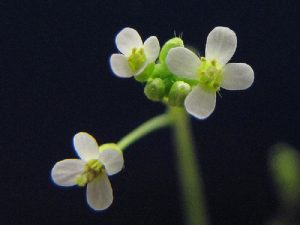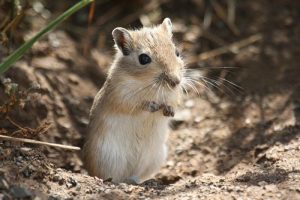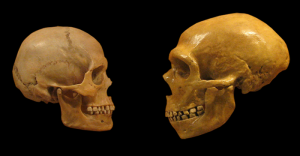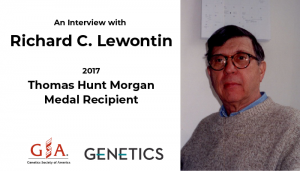Enter your address to receive notifications about new posts to your email.
Articles tagged Population Genetics
(74 results)
-
Which is more powerful: genetic or epigenetic variation?
Although epigenetic modifications contribute to trait variability, their effect pales in comparison to standing genetic variation. The raw material of evolution is genetic variation, but proponents of the “extended evolutionary synthesis” add a new layer to this model: heritable variation in epigenetics. The packaging and tagging of DNA can alter traits without changing the DNA…
-
#PEQG18 in Haiku
Attendees of the Population, Evolutionary, and Quantitative Genetics Conference are a creative bunch. Inspired by one of the PEQG Bingo challenges, they bombarded Twitter with more than 50 #PEQG18 haikus (and one limerick), providing poetic snippets of the meeting to those who couldn’t make it. Joining the 17-syllable summaries were fantastic sketch notes of the meeting by…
-
2018 Crow Award finalists presenting at #PEQG18
We are delighted to announce the finalists for the James F. Crow Early Career Researcher Award! All finalists will speak at the Crow Award session of the Population, Evolutionary, and Quantitative Genetics Conference on May 14, 2018 in Madison, Wisconsin. The Award honors the legacy of James F. Crow, whose contributions to the field of…
-
Enter the #PEQG18 T-shirt design contest!
Get creative for the Population, Evolutionary, and Quantitative Genetics Conference. Show your creative side, and inspire the population, evolutionary, and quantitative genetics community by entering the #PEQG18 T-shirt design contest! The winning entry will be used on official conference T-shirts available for sale at the Population, Evolutionary, and Quantitative Genetics Conference, to be held…
-
Heights and pitfalls in detecting polygenic adaptation
Identifying signatures of polygenic adaptation is getting easier—but a commentary calls for caution in drawing conclusions. If you’ve ever wished for a stepstool so you could see the stage at a crowded concert, or, conversely, if you’re tired of being asked “How’s the weather up there?”, you’ve likely pondered what makes some of us tall…
-
The genomic downside of greener pastures
Population data from Quebec reveals the genetic consequences of rapid human expansions. The majority of the 6.5 million French Canadians living in Quebec today can trace their heritage to just 8500 settlers who formed clusters around the Saint Lawrence River in the early 17th century. Most remained near those riverside settlements until 200 years later,…
-
Zooming in: population genetics on a mitochondrial level
The mitochondria powering your cells are not all genetically identical. Genetic variation across the mitochondria of a single individual is common. This diversity is called mitochondrial heteroplasmy, and it plays an important role in the severity of mitochondrial disease. Problematically, the complexities of mitochondrial inheritance makes it extremely difficult to predict how this diversity is…
-
Get outbred: Genetic diversity in laboratory gerbils
Biologists rely on animal models to answer important questions that can’t be addressed with cells in a dish. Often, these animals are deliberately inbred; a less diverse population of animals means that data obtained from experiments with these animals will be less noisy and easier to interpret, so fewer animals are needed for meaningful results.…
-
Tales told by ancient human DNA
Archaeologists have long known how to extract millennia-old stories from a single tooth buried in an ancient ruin—and now geneticists have the tools to join them. Advances made in the last several years have enabled researchers to sequence tiny amounts of DNA preserved in very old specimens, such as the material inside a tooth from…
-
Random Factors: An Interview with 2017 Thomas Hunt Morgan Medal Recipient Richard C. Lewontin
The Thomas Hunt Morgan Medal is awarded to an individual member of the Genetics Society of America for lifetime achievement in the field of genetics. It recognizes the full body of work of an exceptional geneticist. The 2017 recipient is Richard C. Lewontin, whose contributions and influence have profoundly shaped the field of evolutionary genetics.…
-
Behind the Cover: Genetic ancestry in Colombia
Over three centuries, as many as a million enslaved people were shipped to the Colombian port of Cartagena. From this hub of the slave trade, European colonists took Africans to labor in many places across the Americas, including the gold mines of the Chocó region. Today, people from Chocó often proudly identify as Afro-Colombian, while…











